Alternating Treatment Design Aba
Alternating treatment design aba. Alternating treatments design An experimental design characterized by the rapid alternation of two or more distinct treatments IVs while their effects on the target behavior DV are measured. Or one treatment could be implemented in the morning and another in the afternoon. Sindelar Rosenburg Wilson 1985.
The alternating treatments design has several variations. The results from a functional analysis are graphed using an alternating treatments design. About Press Copyright Contact us Creators Advertise Developers Terms Privacy Policy Safety How YouTube works Test new features Press Copyright Contact us Creators.
Experimental control is shown when the data paths of two treatments show little or no overlap. Applied behavior analysis for t. Given the apparent significant discrepancies in interpretation of meta-analytic reports on ABA based treatment research for participants with ASD conducted by leading US healthcare policy makers we argue that it is important to the ASD research community to further examine SCD data with a view to determining how best now to calculate treatment effects while alternate improved procedures.
One commonly used alternative to the ATD is called the adapted alternating treatments design AATD. The background of these terms is reviewed and a new more descriptive term Alternating Treatments Design is proposed. Whereas the traditional ATD assesses the effects of different interventions or independent variables on a single outcome variable in the AATD a different set of responses is assigned to each intervention or independent variable.
At ABA Connect our commitment is to provide the industrys best evidence-based ABA therapy services to our clients to dramatically improve the quality of their lives. A description of how to use Excel to create an alternating treatment design graph. In the alternating treatment design following a baseline phase the treatments are alternated in rapid succession compared to the ABAB design which has more within phase observations or measurements allowing a comparison of the treatment to baseline or an alternative treatment over repeated observations eg ABABABABAB and ABCBCBCBC.
This includes the single-phase which can be either with or without a no treatment control condition. About Press Copyright Contact us Creators Advertise Developers Terms Privacy Policy Safety How YouTube works Test new features Press Copyright Contact us Creators. A Troutman A.
Alternating Treatments Design Use when. Alternating treatments design ie multielement design the rapid alternation of comparing two or more treatments ie independent variable while measuring the effects on the target behavior ie dependent variable.
Lastly the three-phase alternating treatments design is an initial.
Alternating treatments design two or more treatments are alternated relatively quickly on a regular schedule. Alternating Treatments Design Use when. In the alternating treatment design following a baseline phase the treatments are alternated in rapid succession compared to the ABAB design which has more within phase observations or measurements allowing a comparison of the treatment to baseline or an alternative treatment over repeated observations eg ABABABABAB and ABCBCBCBC. The alternating treatments design has several variations. Whereas the traditional ATD assesses the effects of different interventions or independent variables on a single outcome variable in the AATD a different set of responses is assigned to each intervention or independent variable. Alternating treatments design An experimental design characterized by the rapid alternation of two or more distinct treatments IVs while their effects on the target behavior DV are measured. A Troutman A. Applied behavior analysis for t. Experimental control is shown when the data paths of two treatments show little or no overlap.
The background of these terms is reviewed and a new more descriptive term Alternating Treatments Design is proposed. This includes the single-phase which can be either with or without a no treatment control condition. Alternating treatment design variations ATD can be used to compare one or more treatments to a no-treatment or baseline condition assess the relative contribution of individual components of a package intervention and perform parametric investigations in which different values of an IV are alternated to determine differential effects on behavior change. The results from a functional analysis are graphed using an alternating treatments design. Alternating Treatments Design With No Baseline Treatments are presented randomly to the subjects across different days across times of day or within sessions pre-intervention baseline data are not collected although no treatment phase A can also be alternated eg BACBABCAC Alternating Treatments Design With a Baseline. Lastly the three-phase alternating treatments design is an initial. Alternating treatment design has the following advantages.

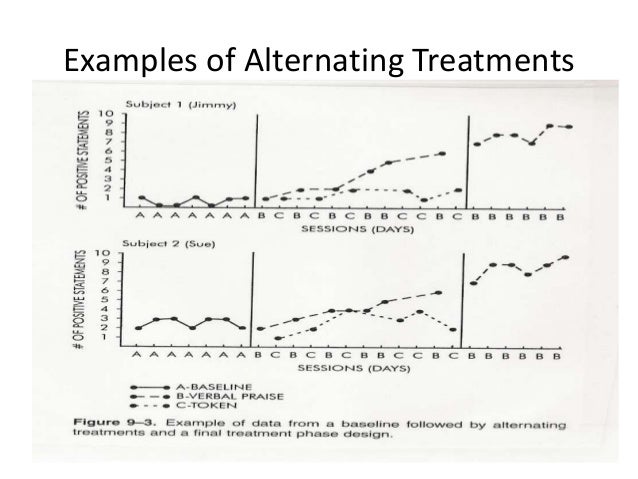

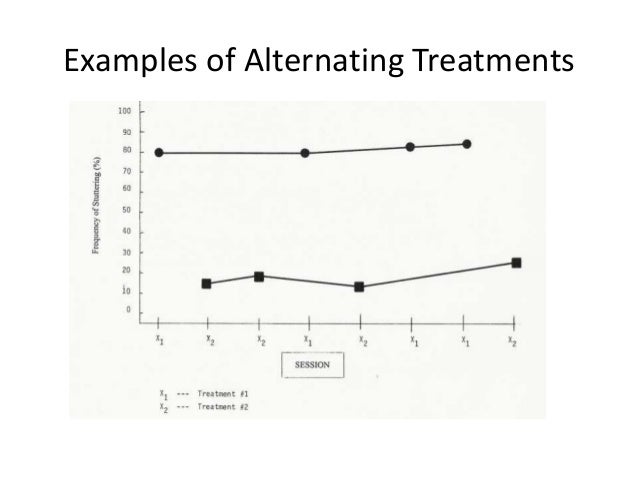




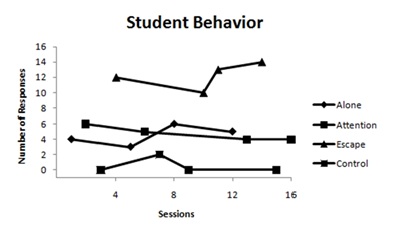




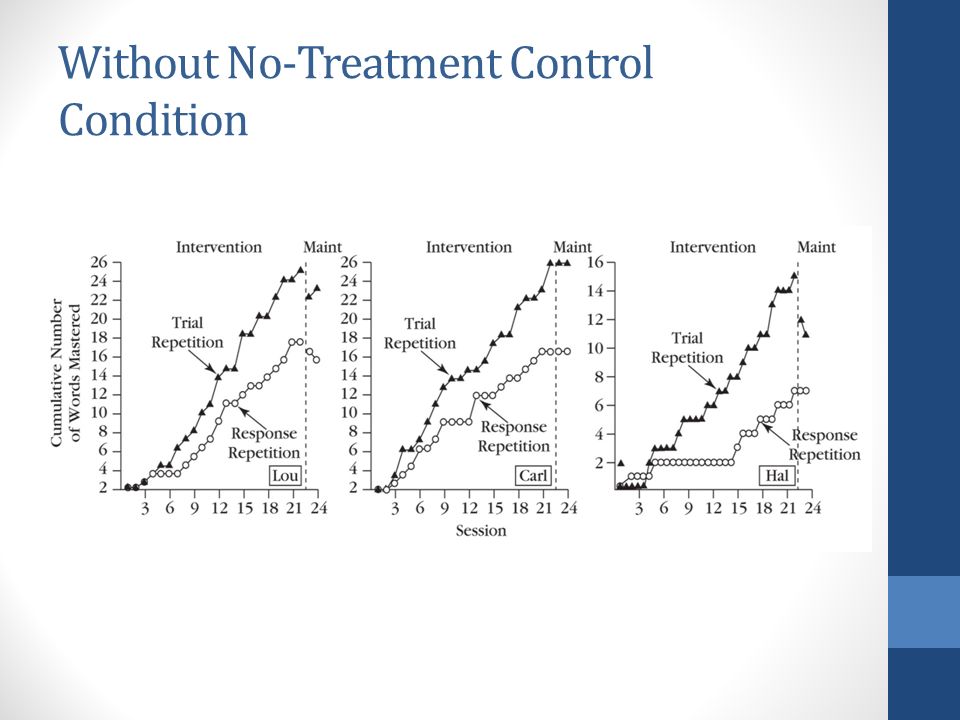



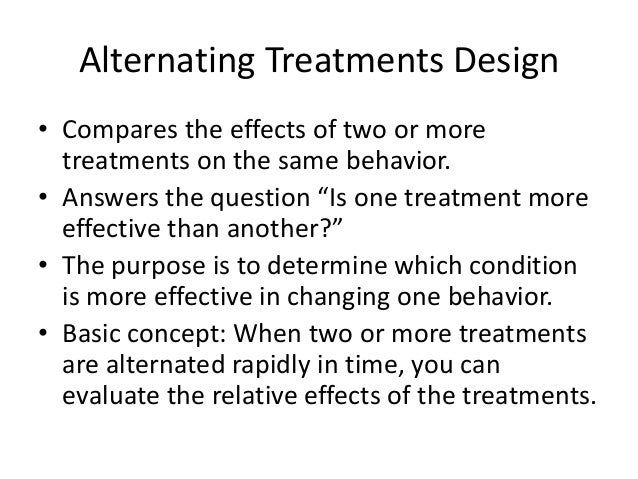







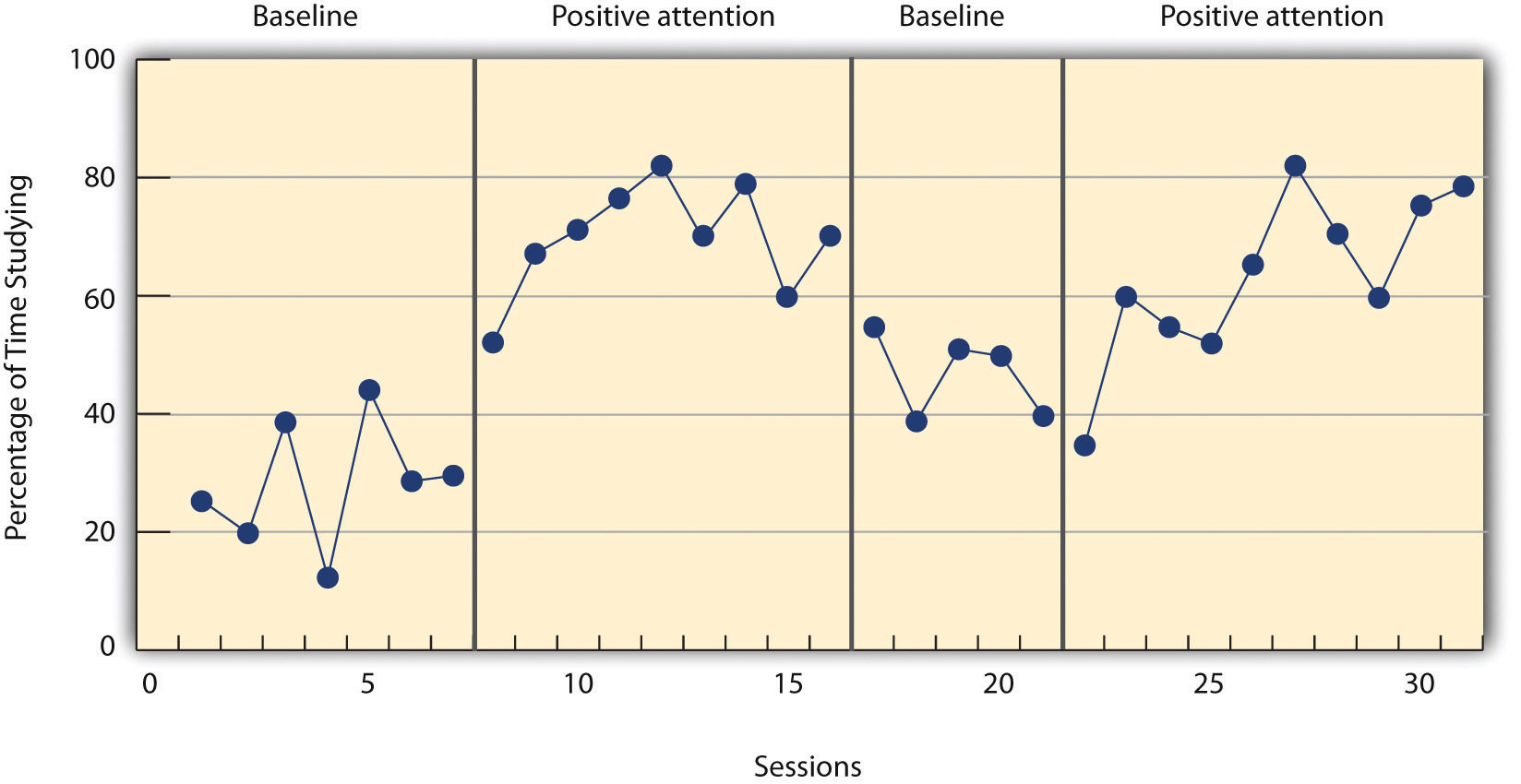



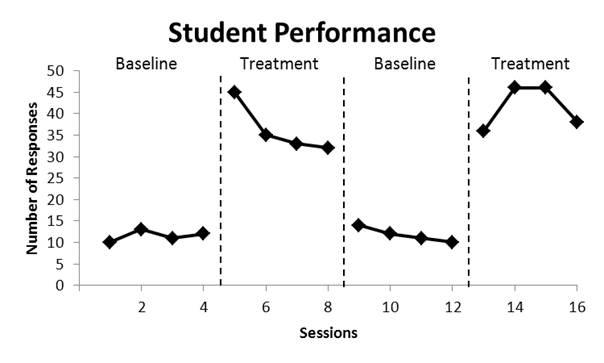
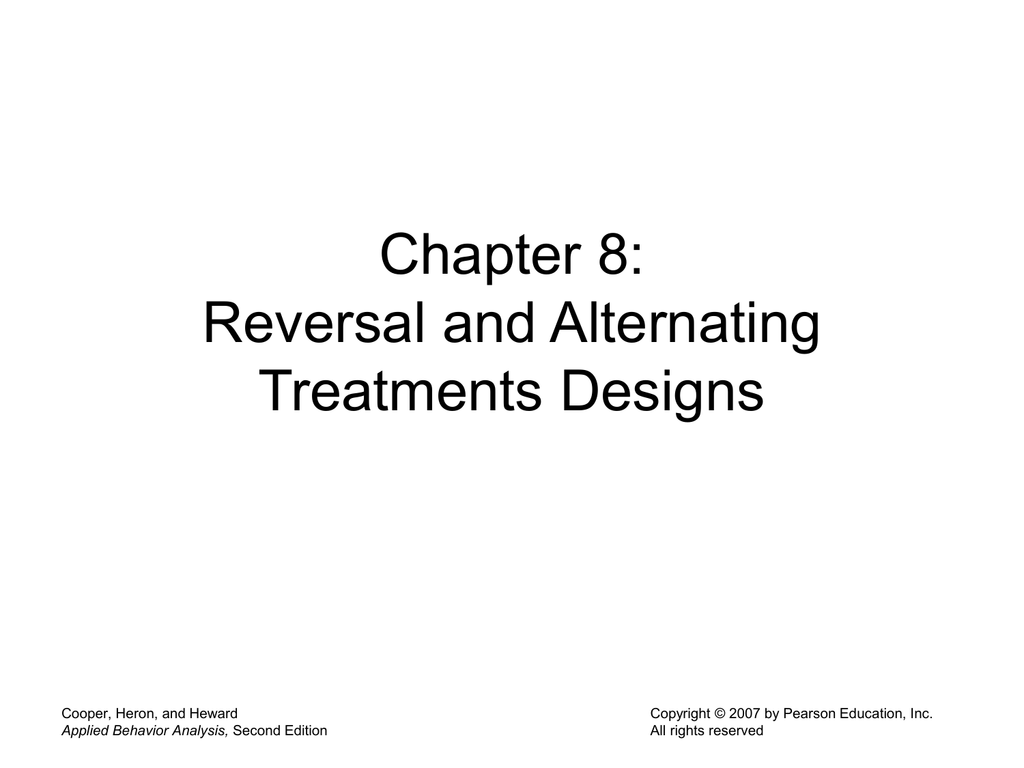


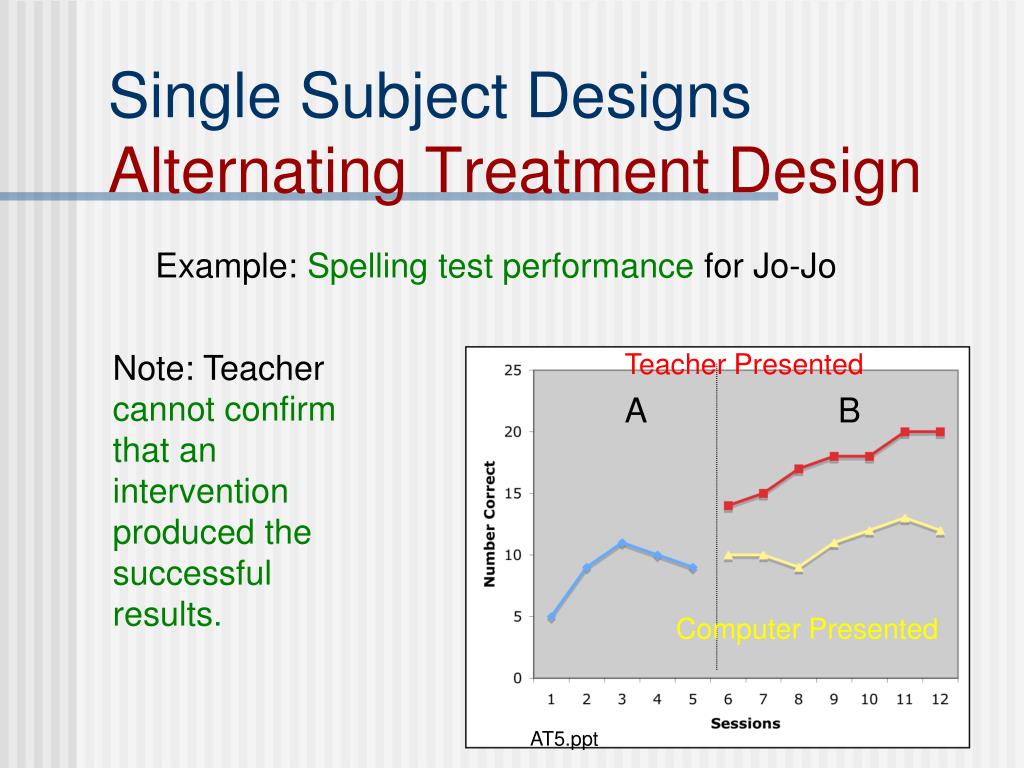


Post a Comment for "Alternating Treatment Design Aba"